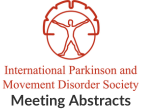Movement disorders caused by benign brain tumor
Objective: Describe unusual etiology of movement disorders (MD). Background: Benign brain tumor can be manifested by MD. The clinical description and role of brain imaging…History and Management of Status Dystonicus
Objective: To describe a consecutive series of 40 status dystonicus patients, identify major clinical characteristics and to document medical and surgical management. Background: Characteristics and evolution…Psychosocial Impact of X-Linked Dystonia Parkinsonism (XDP) of Panay
Objective: The study will determine the patient’s quality of life and their subjective psychological well-being by using the Parkinson Disease Questionnaire (PDQ) - 39 and the World Health…Non motor symptoms in patients with Writer’s cramp
Objective: We aim to explore the non-motor features of WC patients and correlate those with motor symptoms. Background: Writer’s cramp (WC) is essentially a motor…A case of idiopathic adult-onset truncal extension dystonia treated with bilateral pallidal deep brain stimulation
Objective: To describe the outcome of deep brain stimulation (DBS) to the globus pallidus interna (GPi) in an adult patient with idiopathic truncal dystonia with…Development of a New Kinematic Model for Head and Neck Movement Assessment in Cervical Dystonia
Objective: The aim of this study is the development of a new kinematic model for cervical spine to assess abnormal head and neck postures and…Prominent extensor truncal and cervical dystonia induced by mirtazapine
Objective: Truncal and Our aim is to report unusual case of man who developed prominent extensor truncal and cervical dystonia induced by mirtazapine. Background: Truncal…Research on Relationship between Sensory Tricks of Cervical Dystonia and Function of Cerebral Cortex
Objective: To investigate demography of sensory tricks in cervical dystonia, to discuss relationship between sensory tricks and function of sensorimotor integration in supplementary motor area of…Hemidystonia Associated with Alexander Disease
Objective: To describe an uncommon movement disorder phenotype of Alexander disease (AD). Background: AD is a rare autosomal dominant disorder that causes progressive leukodystrophy, especially…Head turning onset and velocity in response to a peripheral visual stimulus in cervical dystonia patients, their unaffected relatives with and without abnormal temporal discrimination and healthy controls.
Objective: We postulate that cephalomotor responses (onset of head turning and speed of head turning) to the appearance of a novel peripheral visual stimulus will…
- « Previous Page
- 1
- …
- 32
- 33
- 34
- 35
- 36
- …
- 42
- Next Page »
